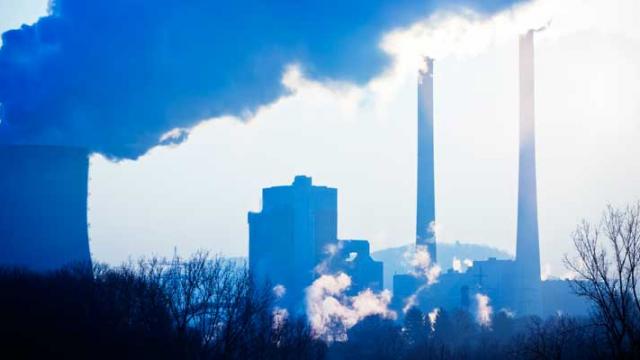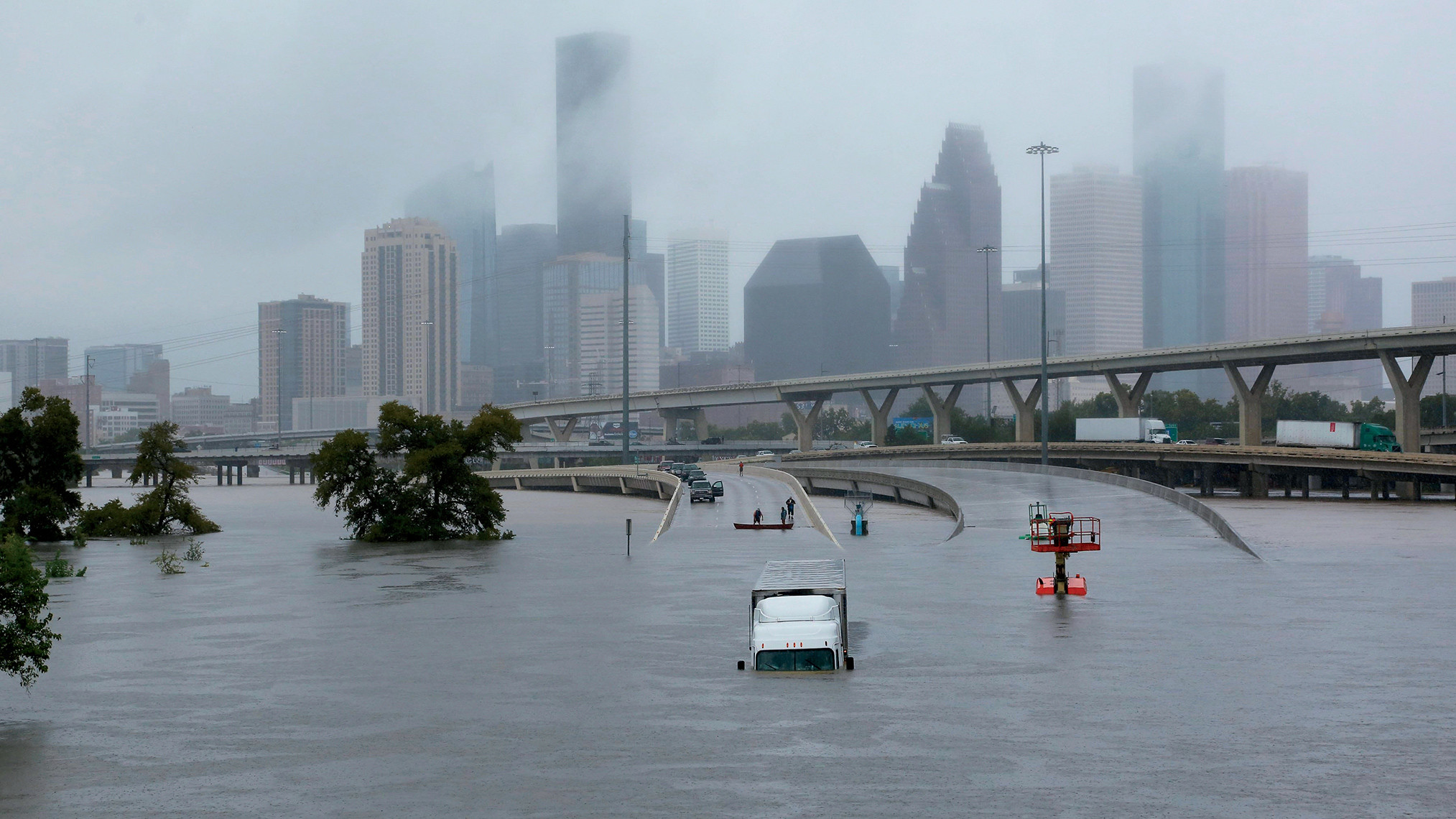
“Banks are funding a future that will cost the lives of the next seven generations of life and beyond… Any financial institution that cannot read the writing on the wall should be stripped of its social license to operate and be held accountable for their investments because those investments are threatening our very lives.”
Tom Goldtooth, executive director of the Indigenous Environmental Network, writes these stark words to accompany the 2019 report, Banking on Climate Change. The study, co-written by Banktrack and Sierra Club, details which banks are primary in funding the climate disaster.
In total, the report documents that since 2016 – a year after global leaders in Paris committed to keeping the planet's warming at less than 2 degrees above pre-industrial levels – 33 global banks have invested $1.9 trillion into fossil fuels companies. JP Morgan Chase, the top big oil backer, alone invested $196 million.
Yet while banks continue business as usual, climate driven disasters are increasing in frequency.
A death toll unknown
"Our job is not to focus on the number of casualties. Although we mourn them, our job is to keep the living alive. That is my team's focus," Jamie LeSueur, the Red Cross's roving emergency operations manager for Africa, told Channel4 News in interview late last month about the devastation caused by Cyclone Idai in Mozambique – one of the largest cyclones to ever hit the Southern Hemisphere.
Beira, which is 90 percent destroyed, is the first city to officially fall to a climate-related disaster. Beyond it, flooding overwhelmed an area the size of Luxembourg. More than 100,000 people are now living in makeshift camps, and 1.7 million people are without aid. The cyclone has ruined the harvest.
“It is punishing people who have not made a dent in creating the global carbon emissions which caused this. It is for those countries that were at the fore of creating this problem to help solve this problem and help Mozambique.” said Filipe Chidumo, Mozambique's High Commissioner to the UK, also interviewed by Channel4 News.
MAN made climate change
Cyclone Idai is yet another example of man-made climate change. But the Banking on Climate Change report makes clear that the real "men" driving climate change have names, like JP Morgan CEO's CEO, Jamie Dimon. In 2013, Richard Heede published a breakthrough peer-reviewed report showing that no fewer than 90 carbon-intense corporations – including 83 oil companies – produced 63 percent of man-made carbon emissions since the mid-19th century.
To assist the countless victims of climate change, many feel that those who have profited in the billions from fossil fuels should pay compensation to victims for their “loss and damage”. Climate perpetrators should cease their polluting actions in the form of climate “mitigation,” and instead pay for “adaptation” so that innocent people can better ready themselves for the next climate disasters.
In short, the billions made from carbon-emitting entities should pay for the destruction that those entities' profiteering caused in Mozambique and beyond.
Loss and damage, mitigation and adaptation are cornerstones of the international climate change process. But this process is co-opted by big oil, big banks and national governments colluding to keep business as usual going whatever the climate cost. One essential pillar for climate justice is the growing body of climate auditing.
Digging deeper into climate debt
Banking on Climate Change showcases the degree to which auditing climate debt is deepening and expanding. In its tenth annual addition, the report for the first time looks at banks' overall practice lending and financing the fossil fuel industry. It also updates its accounting of which banks have provided the greatest funds for the most dangerous oil projects.
In order, the six banks driving fossil fuel companies are JP Morgan, Wells Fargo, Citi, Bank of America, RBC Canada and Barclays. But knowing who is underwriting climate change is one thing. Making them stop and repay the climate debt is another.
The 2019 report adds to a growing body of scientific research revealing who on the whole is driving climate change. It provides information for anyone with a bank account to learn how to "move their money" to banks with non-fossil fuel interests. It gives the escalating climate indignation such as the youth climate strikes another focal point. It informs the divestment movement.
Another growing part of the climate justice jigsaw is litigation.
Suing for climate justice
As Occupy.com reported in 2016, a tsunami of litigation cases has swelled against governments, as citizens accuse them of not tackling climate change while attacking private corporations for the harm their businesses have caused. These include the ongoing cases of 20 millennials suing the US government in Juliana v. United States.
Climate litigation continues to grow. The academic article, "If at first you don’t succeed: Suing corporations for climate change" published by Ganguly et al. in October 2018, reveals that there are more than 1,000 climate-related court cases globally.
The first wave of climate cases, 2005-15, have not been successful in the same way that the first lawsuits against tobacco and asbestos companies did not win immediately. But this might change. Post-2015, climate litigation has taken place in a “rapidly evolving scientific, discursive and constitutional context.” Climate criminals are nearer than ever to being brought to justice.
One reason is that half the emissions from the carbon majors were created after 1988, at which point there was consensus that climate change was a threat. Equally, after 2015 the big banks have even less excuse to plead ignorance since numerous studies reveal their efforts to publicly promote climate denial.
Ganguly et al.'s paper explained that by identifying the perpetrators and victims, future legal cases would be able to avoid being thrown out as political rather than legal arguments. Growing climate catastrophes will push legislators to make the law catch up with our new ecological reality; for example, a similar legal battle is occurring over climate refugees who are not currently recognised as refugees.
Kate Aronoff argued in her Jacobin article, “It’s Time to Try Fossil-Fuel Executives for Crimes Against Humanity,” that UN law makes it clear who is at fault.
“It is not necessary to prove that there is an overall specific intent. It suffices for there to be a simple intent to commit any of the acts listed…The perpetrator must also act with knowledge of the attack against the civilian population and that his/her action is part of that attack,” writes Aronoff, whose target is the global oil industry – though global bankers are also treated as complicit climate criminals.
These legal cases are not only intended for court rooms. They are about shifting the court of public opinion, which will itself pressure the legal battles – but also revokes the social licence of some of the men behind man-made climate change. The 2019 Banking report provides further substantive evidence to both courts.














